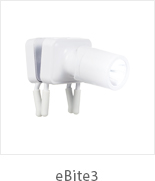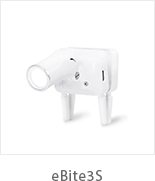| Title | A heater core is an important component of a vehicle's heating and coo… |
|
1. Compressor: The compressor is the heart of a cooling system and is responsible for compressing the refrigerant gas to a high pressure. This process raises the temperature of the gas, allowing it to release heat when it reaches the condenser. In conclusion, the heater core is a crucial component of a vehicle's heating system, responsible for providing warmth to passengers during cold weather. Regular maintenance and prompt repairs are important to ensure the heater core functions properly and efficiently. If you suspect an issue with your vehicle's heating system, it is best to have it inspected and repaired by a professional mechanic. In conclusion, understanding the function, maintenance, and common issues associated with the throttle body is essential for every vehicle owner. By staying informed and addressing any problems promptly, you can ensure a smoother driving experience and prolong the life of your engine. Like any other vehicle component, the TPS can experience problems over time, leading to issues such as poor performance, rough idling, or a decrease in fuel efficiency. Here are some common TPS-related problems and how to troubleshoot them: 1. Erratic Idle or Stalling: If your vehicle experiences erratic idle or stalls frequently, it may indicate a faulty TPS. In such cases, it is recommended to check the TPS for proper adjustment or potential wear and tear. The throttle body is a crucial component of the modern internal combustion engine, playing a vital role in controlling the airflow entering the engine and ultimately influencing performance and fuel efficiency. In this article, we will delve into the function, maintenance, and common issues associated with the throttle body. As we strive to combat air pollution and protect the environment, the catalytic converter remains a critical component in achieving cleaner air quality. By understanding its function and importance, vehicle owners can appreciate the role this device plays in reducing harmful emissions and contributing to a more sustainable future. The ignition coil is a vital component of a vehicle's ignition system, playing a crucial role in the starting and smooth running of the engine. This small but powerful device is responsible for converting the low voltage from the battery into a high voltage needed to spark the spark plugs in the combustion chamber. This spark is what ignites the air-fuel mixture to start the Engine Immobilizer System and keep it running efficiently. Structure and Function: An ignition coil is typically a transformer that consists of two sets of coils wrapped around a ferrous core. The primary coil receives low voltage electricity from the battery and creates a magnetic field around the iron core. When the electrical current is interrupted or turned off, the magnetic field collapses, inducing a high voltage in the secondary coil. This high voltage surge is then sent to the spark plugs to create a spark and ignite the air-fuel mixture in the engine. 2. Throttle Position Sensor (TPS) Failure: The TPS is responsible for sending signals to the engine control unit regarding the throttle position. A faulty TPS can cause erratic idling, poor acceleration, and potential stalling. In conclusion, the throttle position sensor is a critical component of a vehicle's engine management system that directly impacts engine performance and overall drivability. Regular maintenance and addressing any TPS-related issues promptly can help ensure a smooth and efficient driving experience. A catalytic converter is a crucial emission control device found in most modern vehicles that plays a significant role in reducing harmful pollutants released into the atmosphere. This device is designed to convert toxic gases produced by internal combustion engines into less harmful substances before they are released through the exhaust system. Replacing a heater core can be a complex and labor-intensive task, often requiring removal of the dashboard to access the component. It is recommended to have a qualified mechanic perform this repair to ensure it is done correctly and safely. Maintaining the heater core is essential for ensuring proper functioning of the vehicle's heating system. Over time, the heater core can become clogged with dirt, debris, or corrosion, which can impede the flow of coolant and reduce the efficiency of the heating system. Signs of a failing heater core include lukewarm air coming from the vents, a sweet smell inside the vehicle, or a buildup of moisture on the windshield. How does a heater core work? When the engine is running, it produces heat that is transferred to the coolant circulating through the engine block. This hot coolant then flows through the heater core, where a fan blows air over the core's fins, transferring the heat to the air. The now heated air is then directed into the vehicle's interior, providing warmth for passengers in cold weather. 3. Check Engine Light: If the check engine light on your dashboard is illuminated, it could be due to a TPS-related issue. Using an OBD-II scanner to read the error codes can help pinpoint the exact problem with the TPS. |
|











